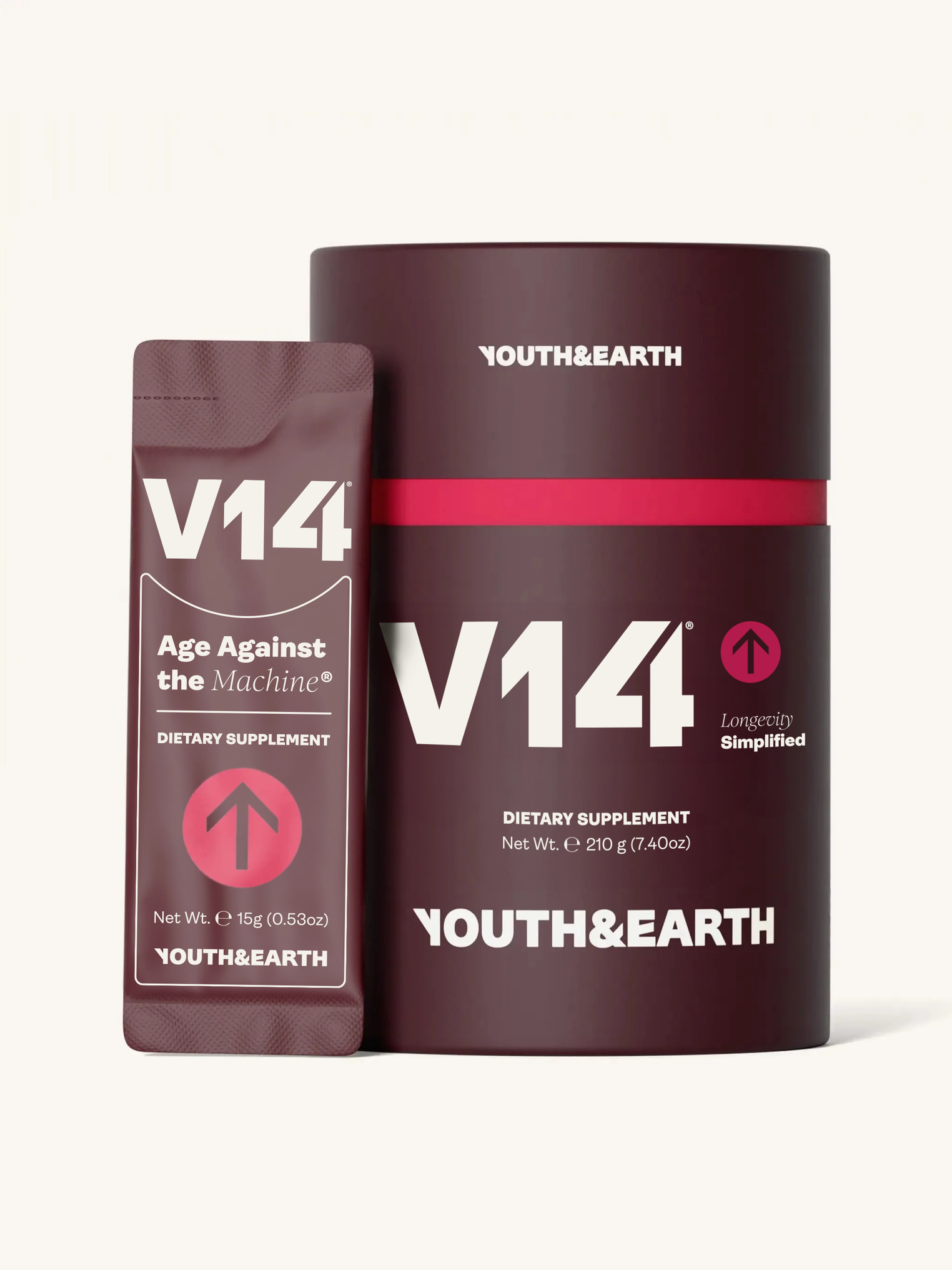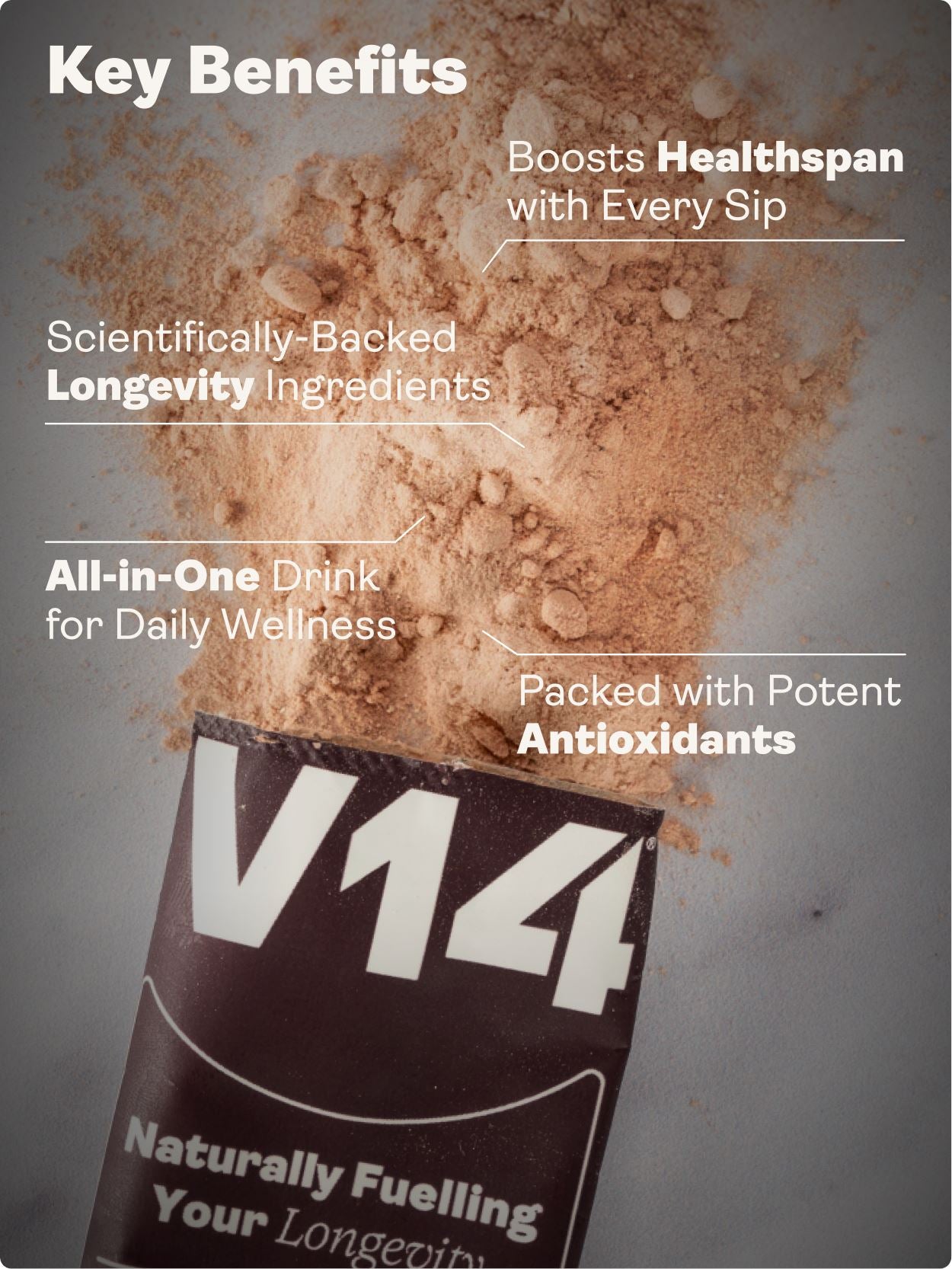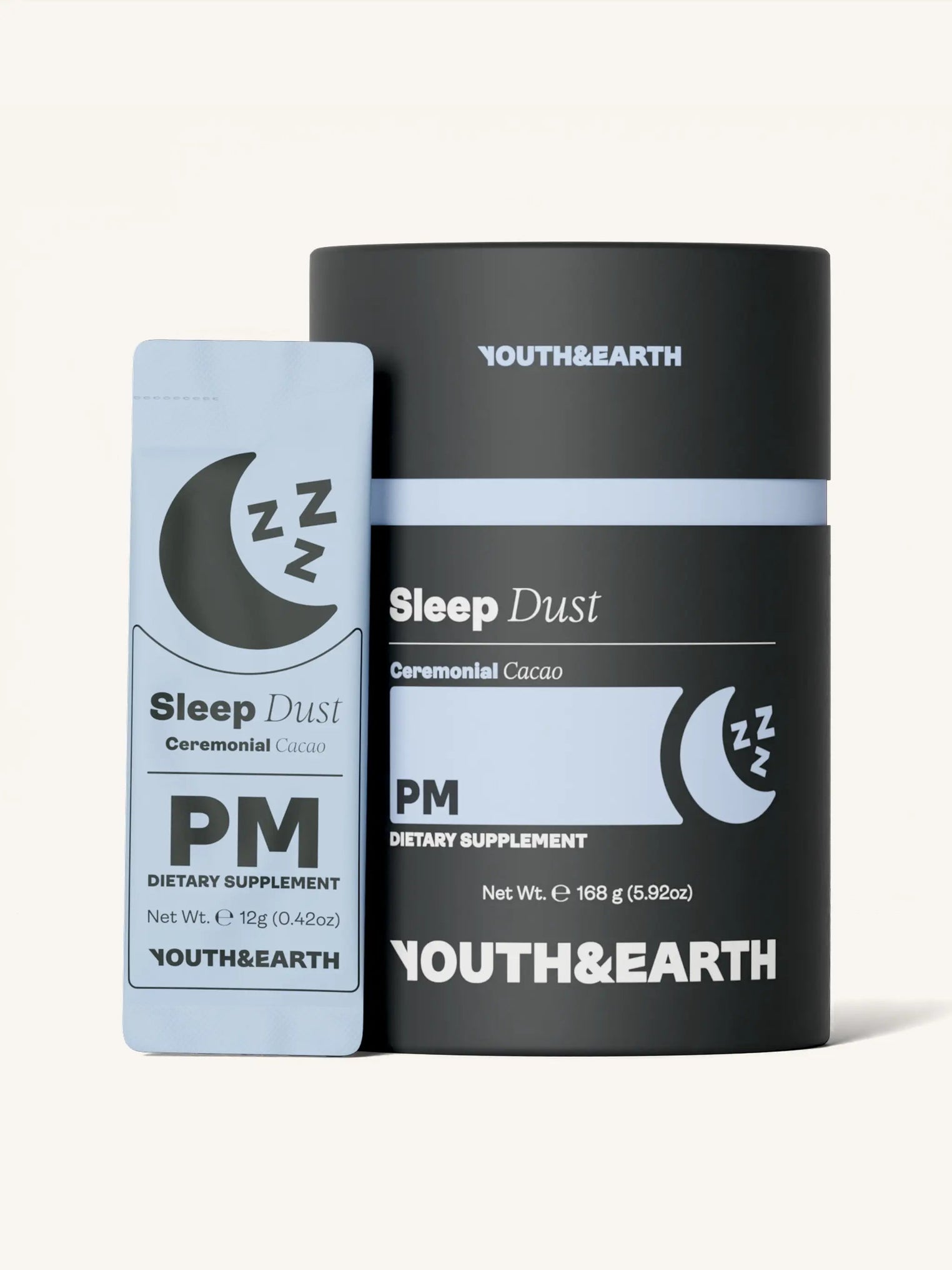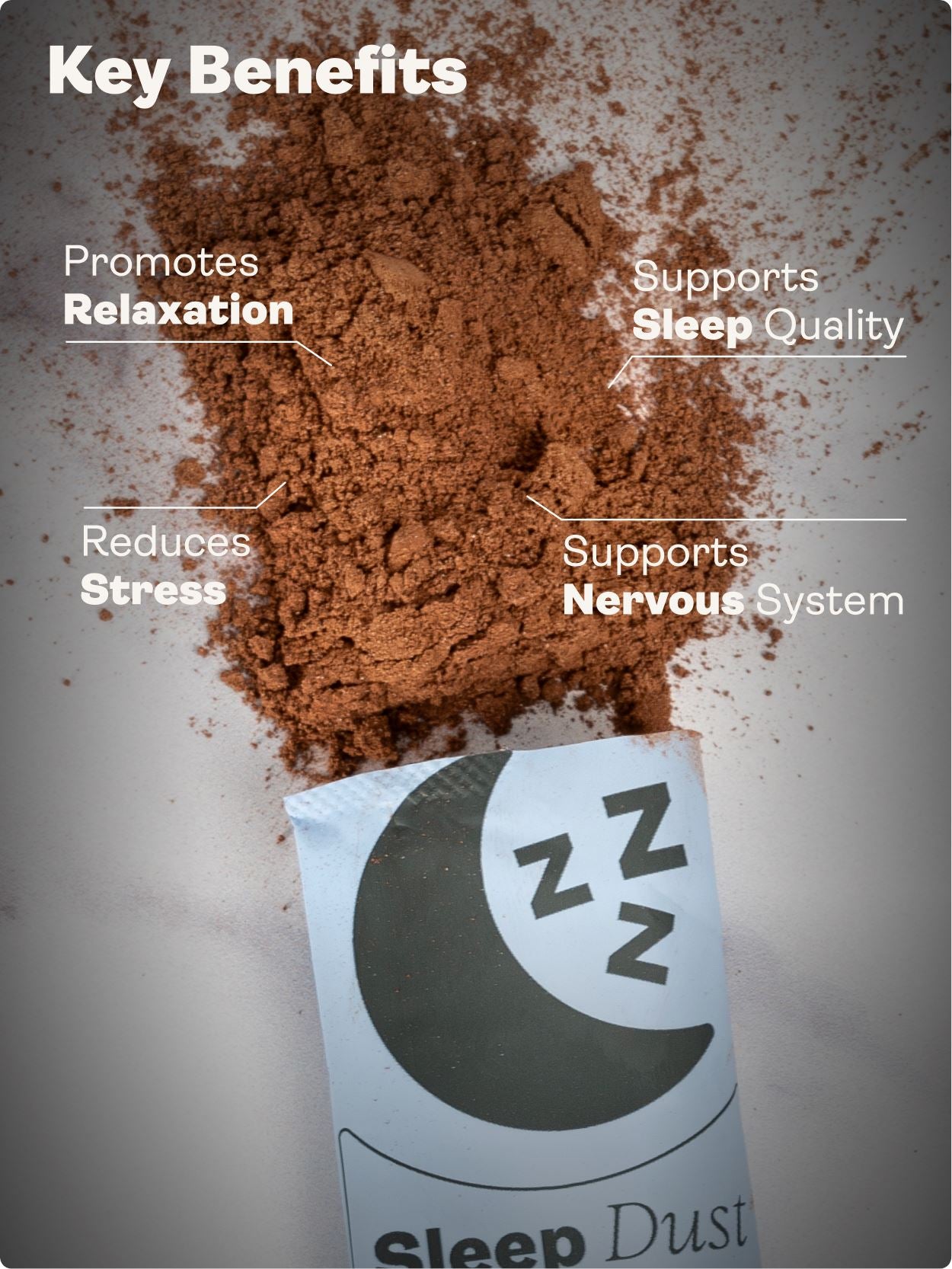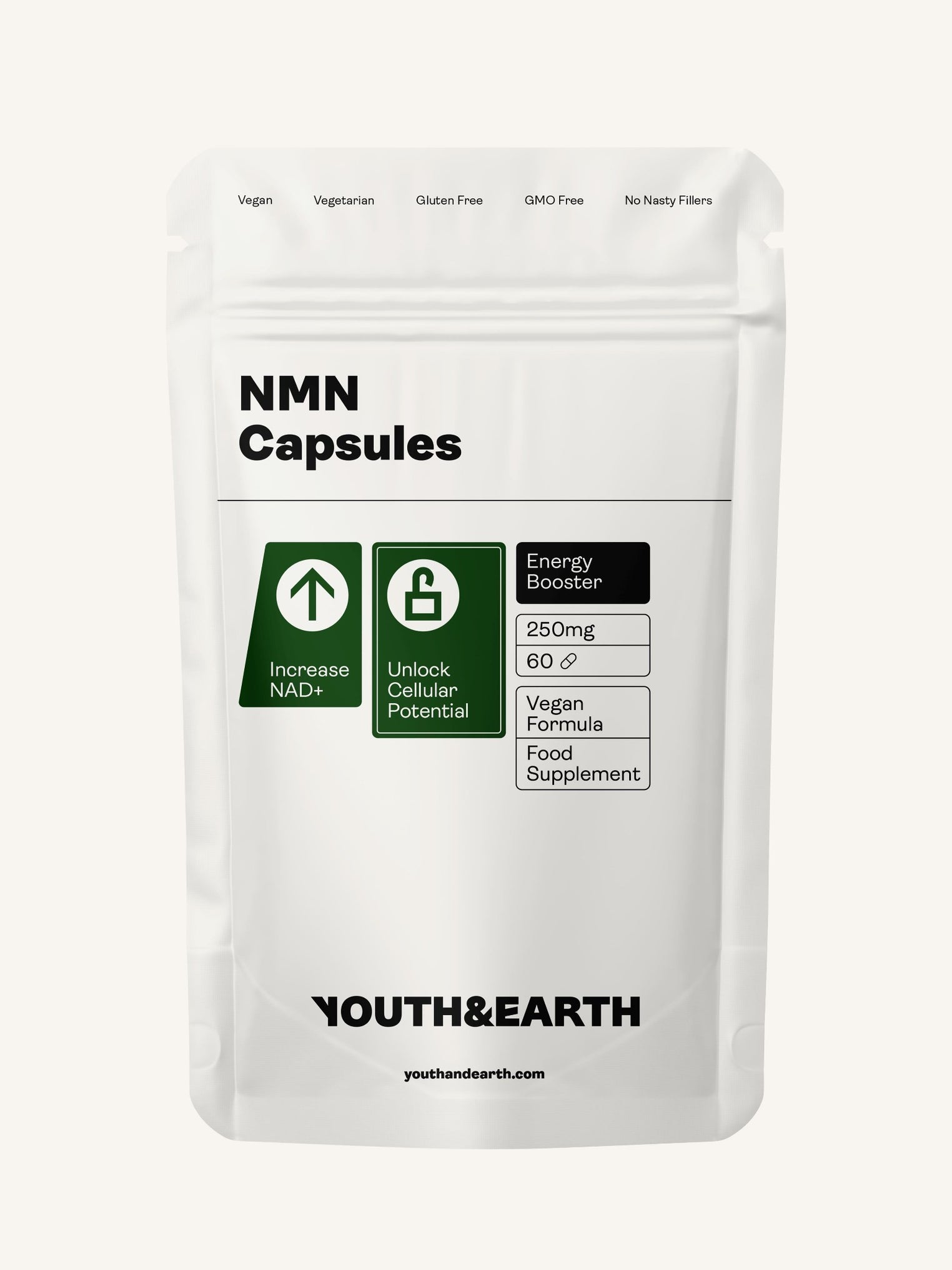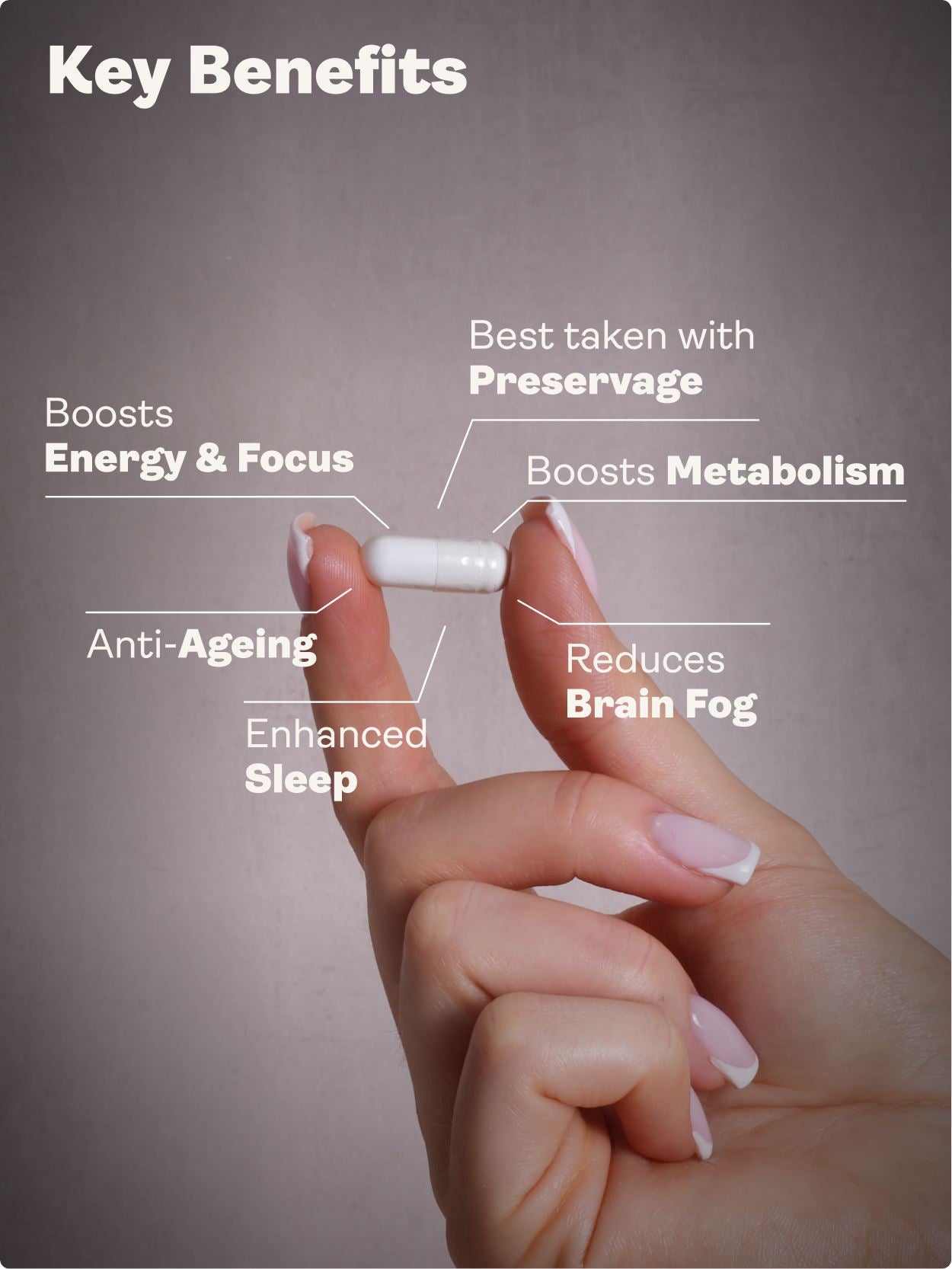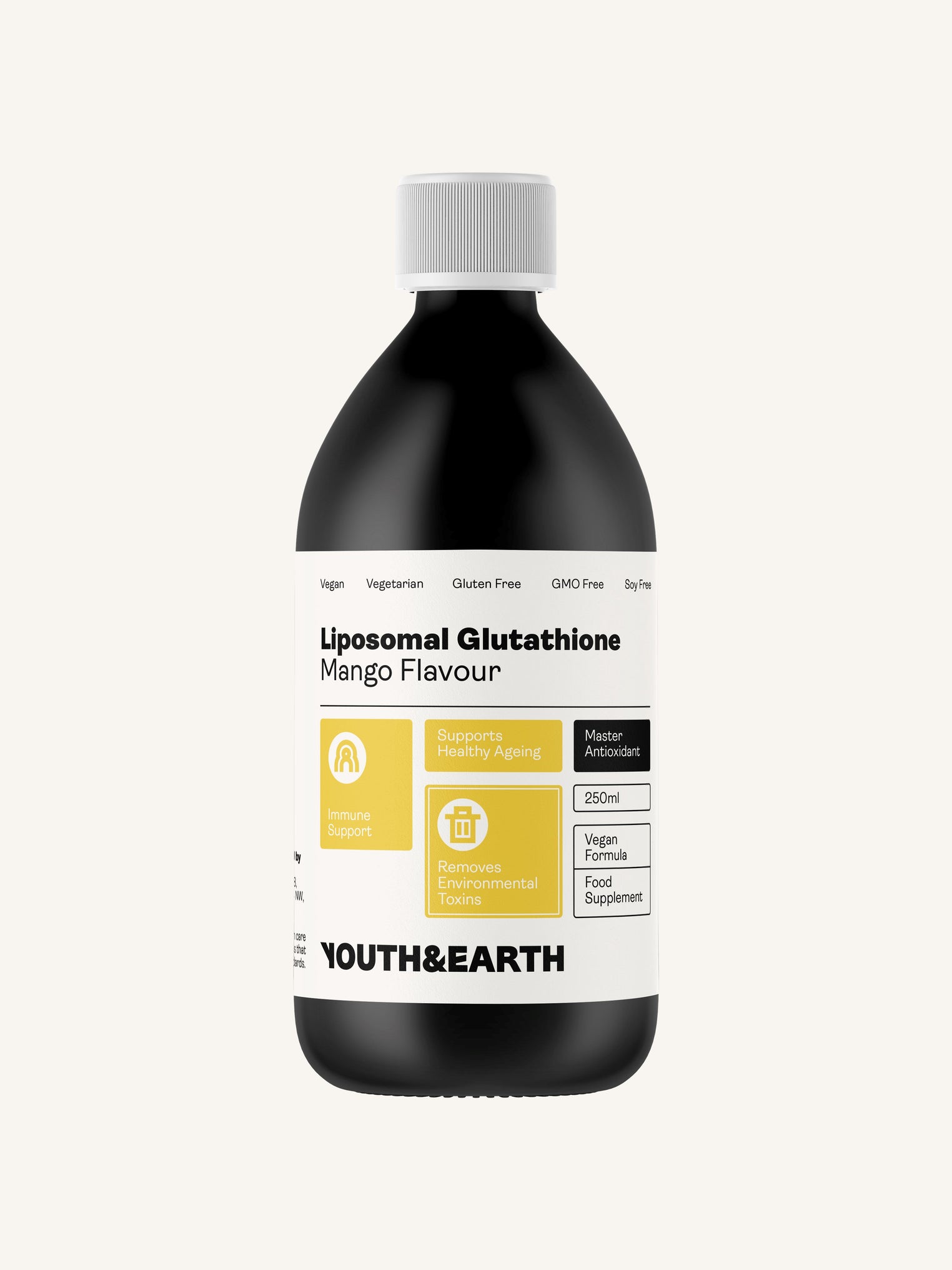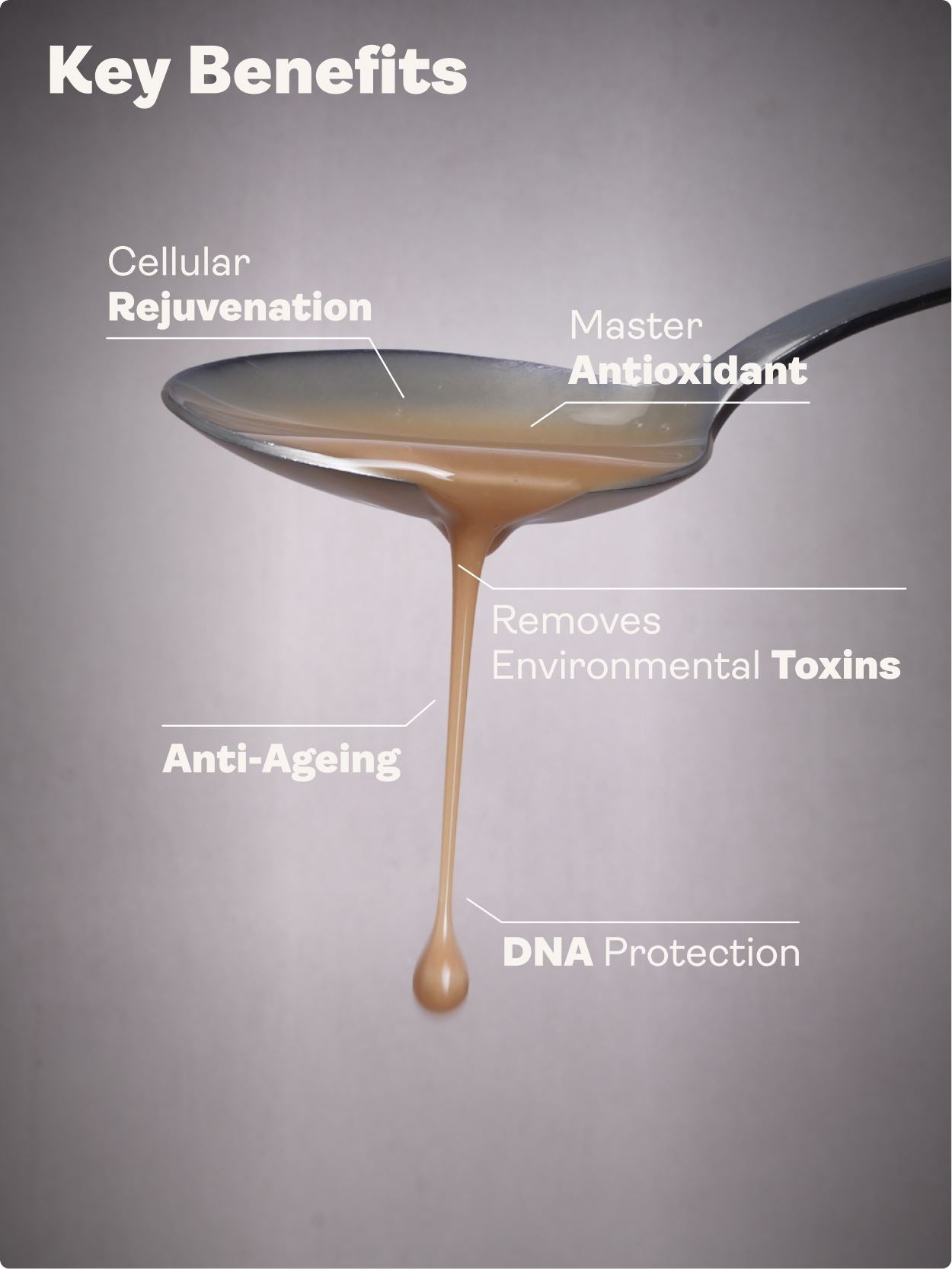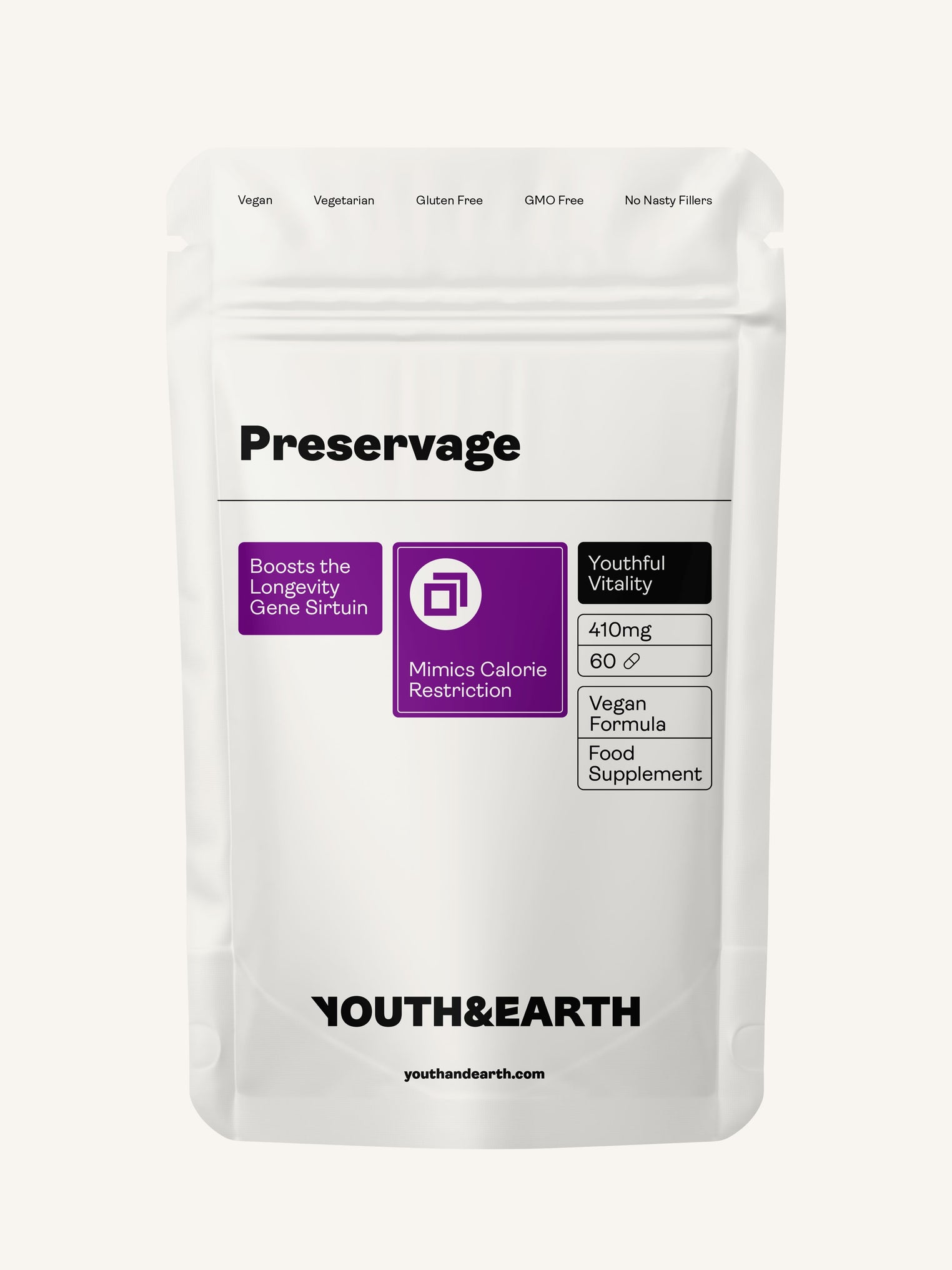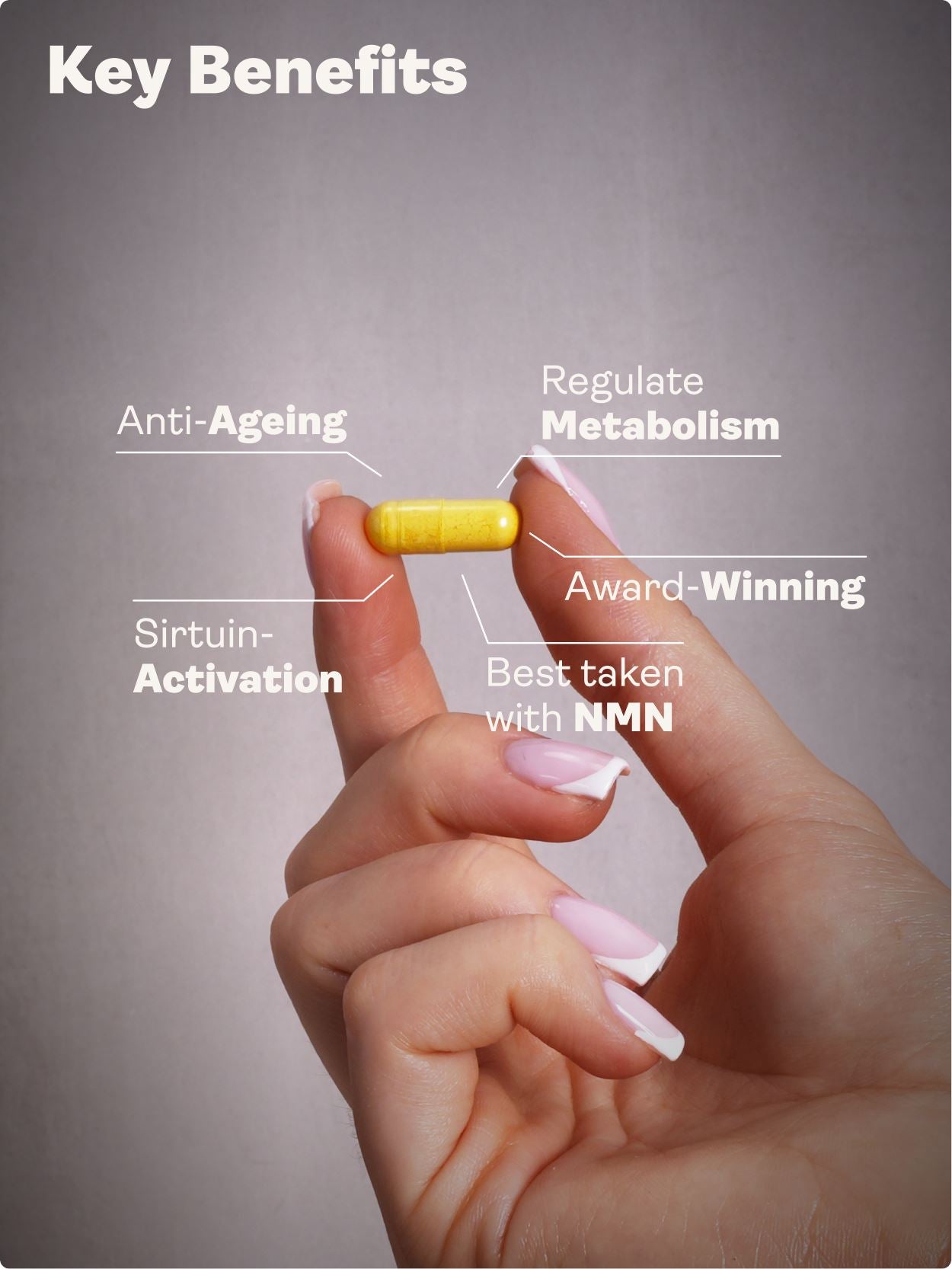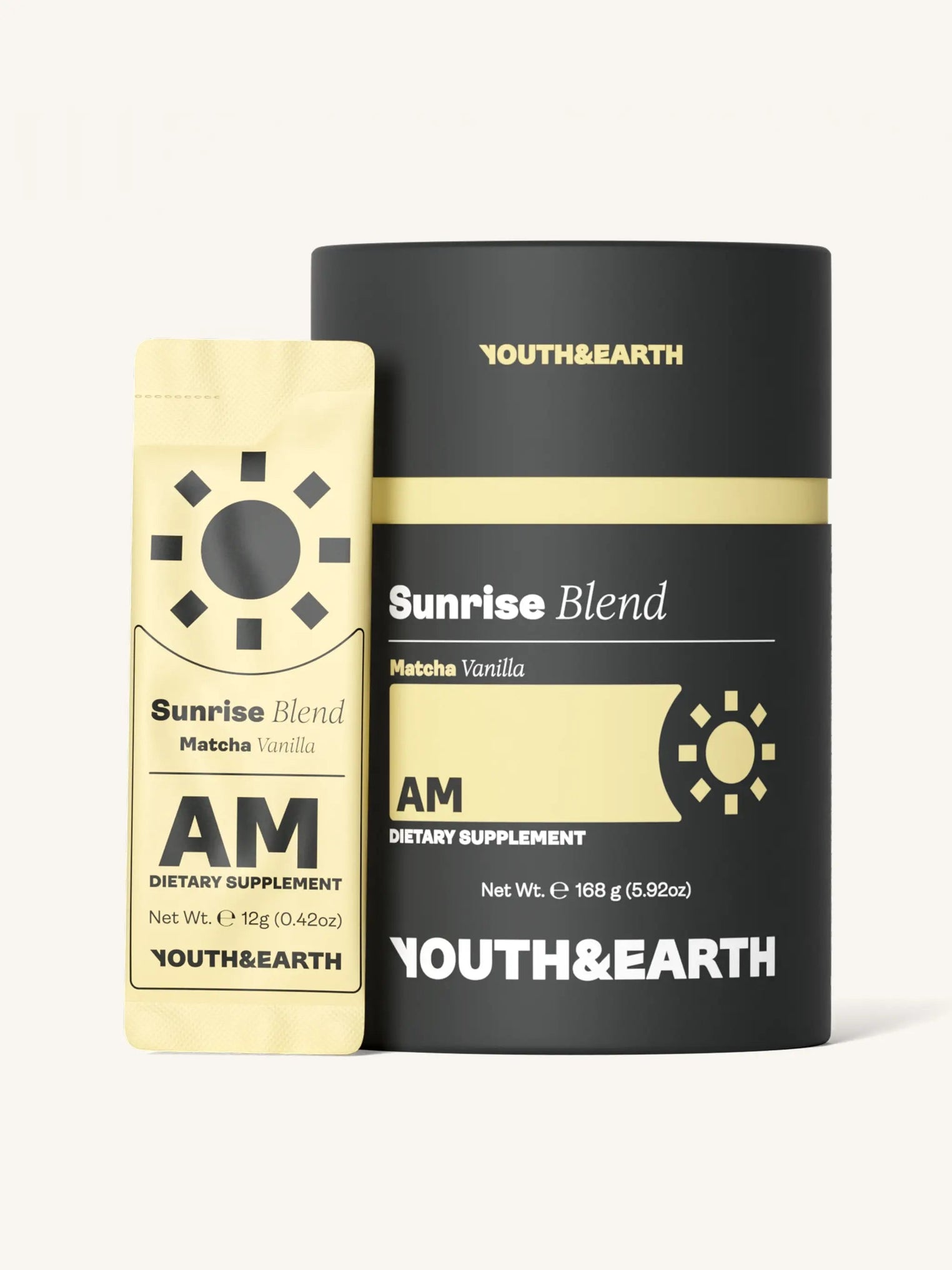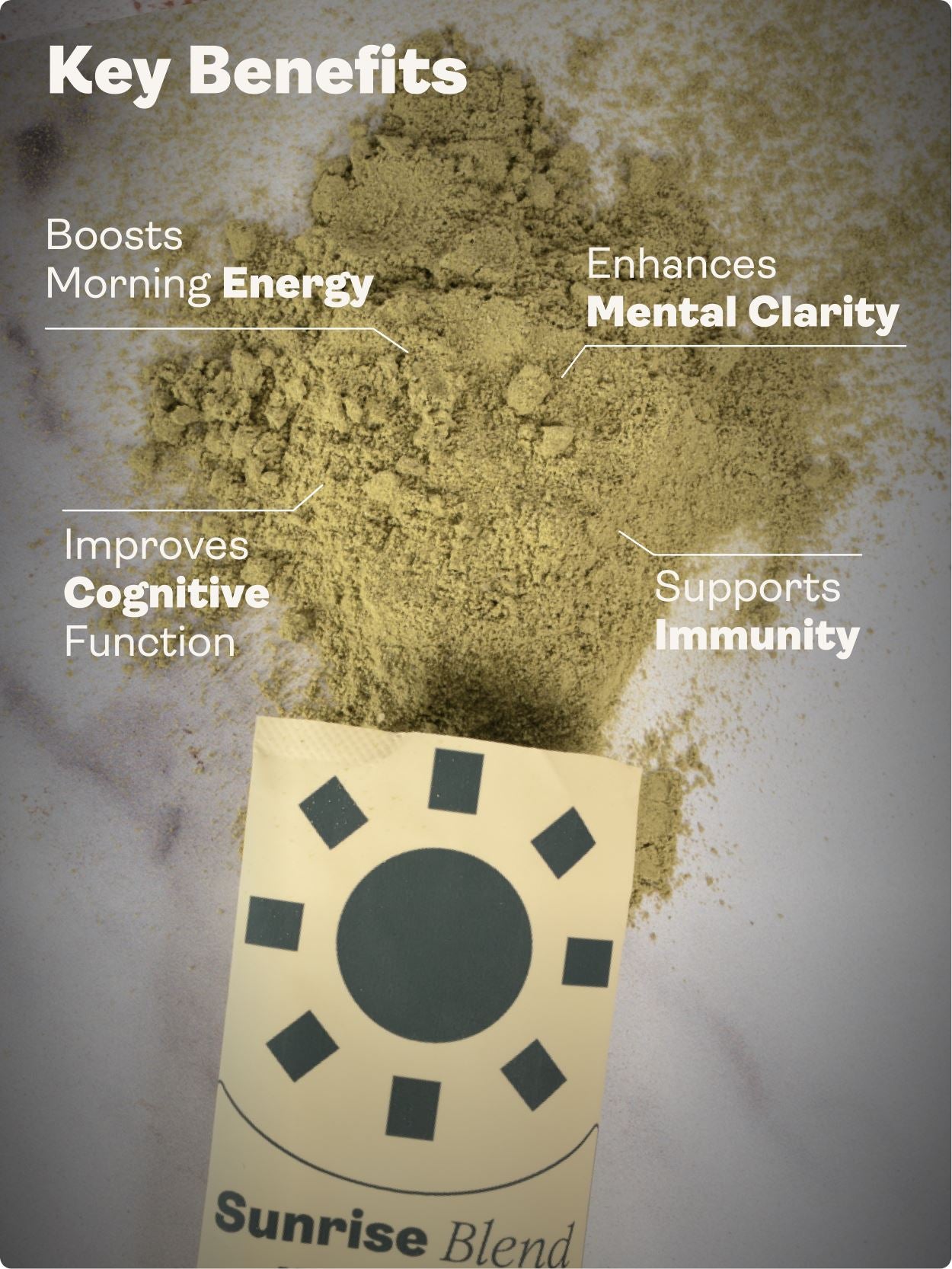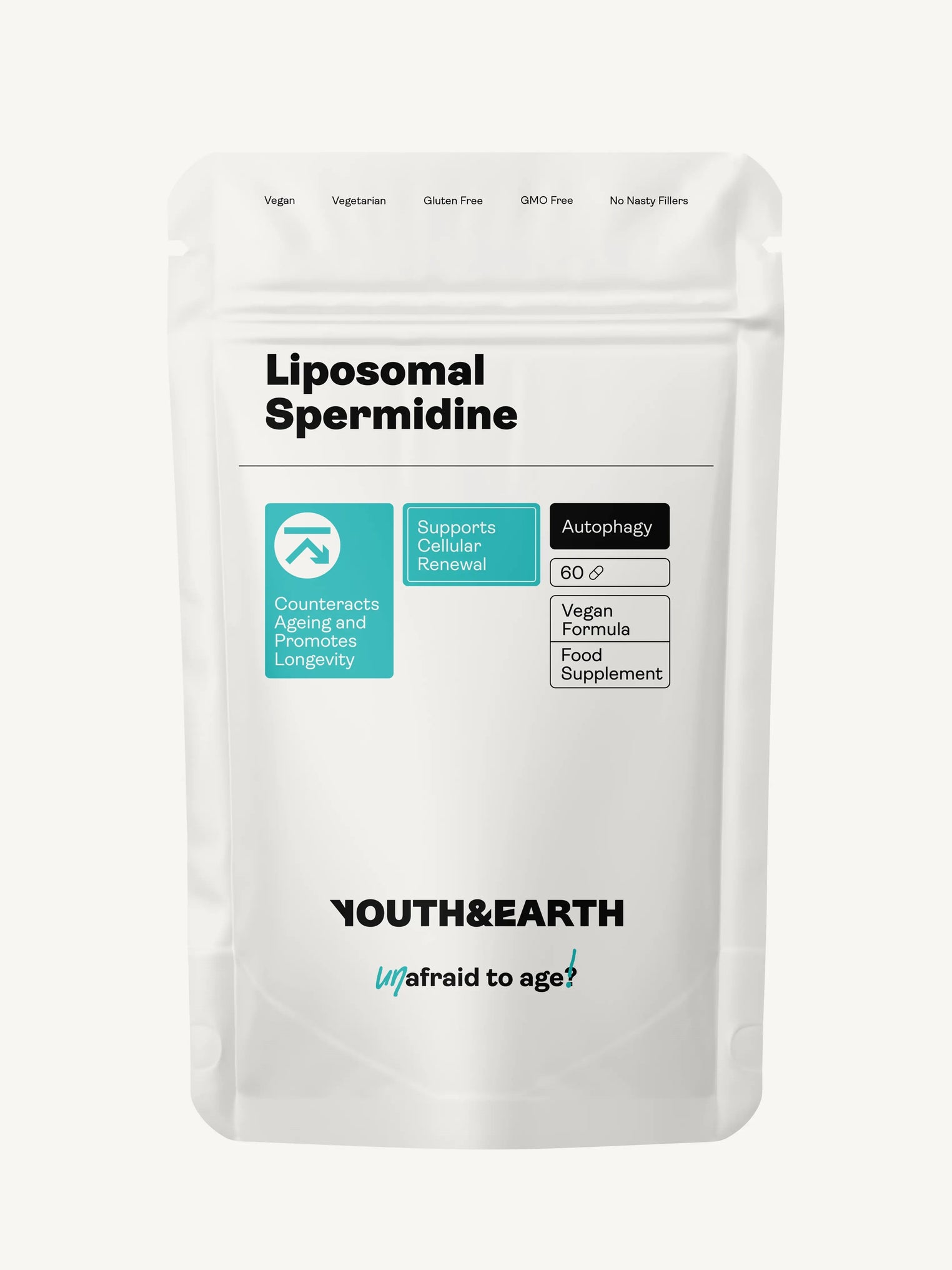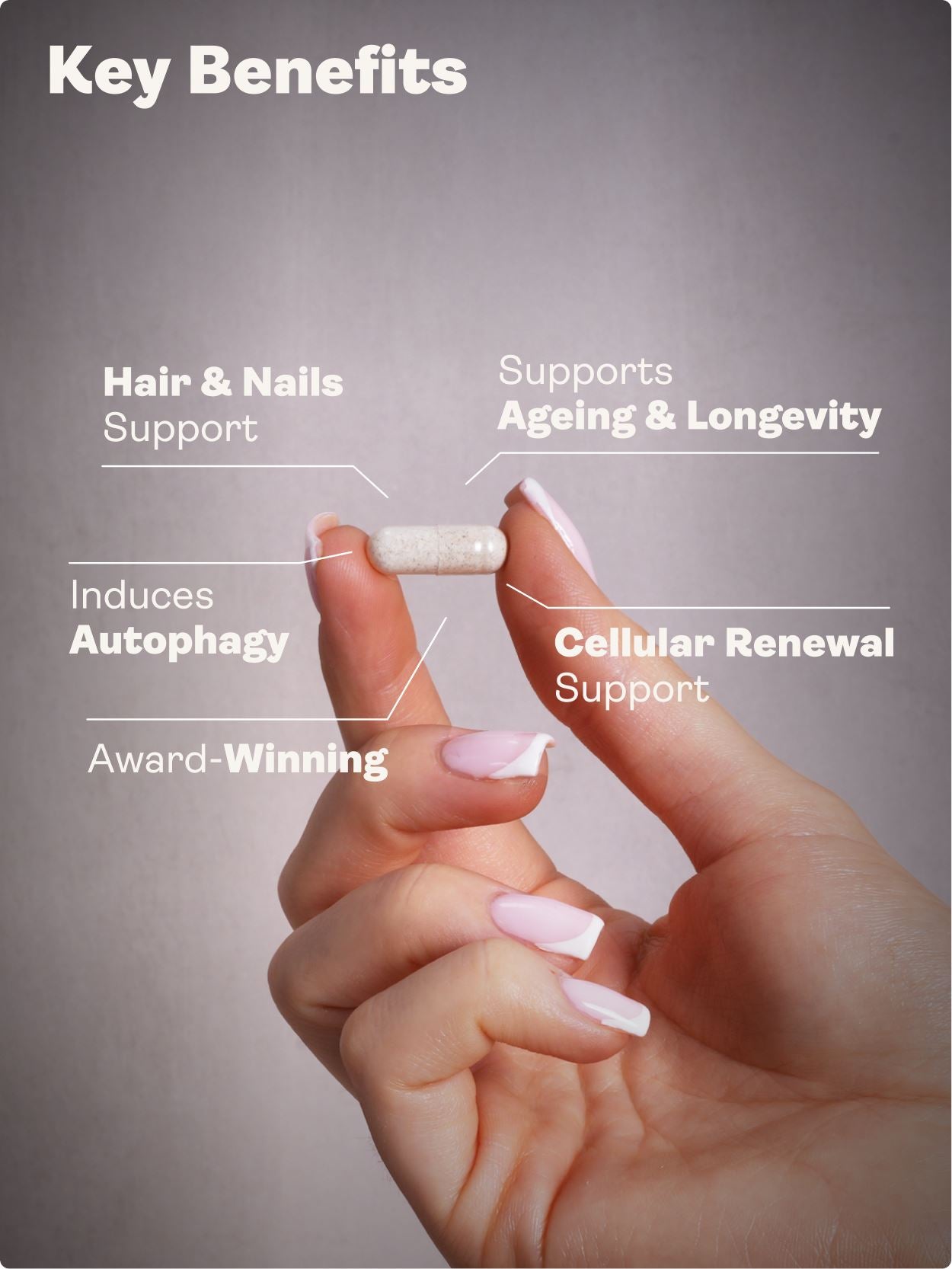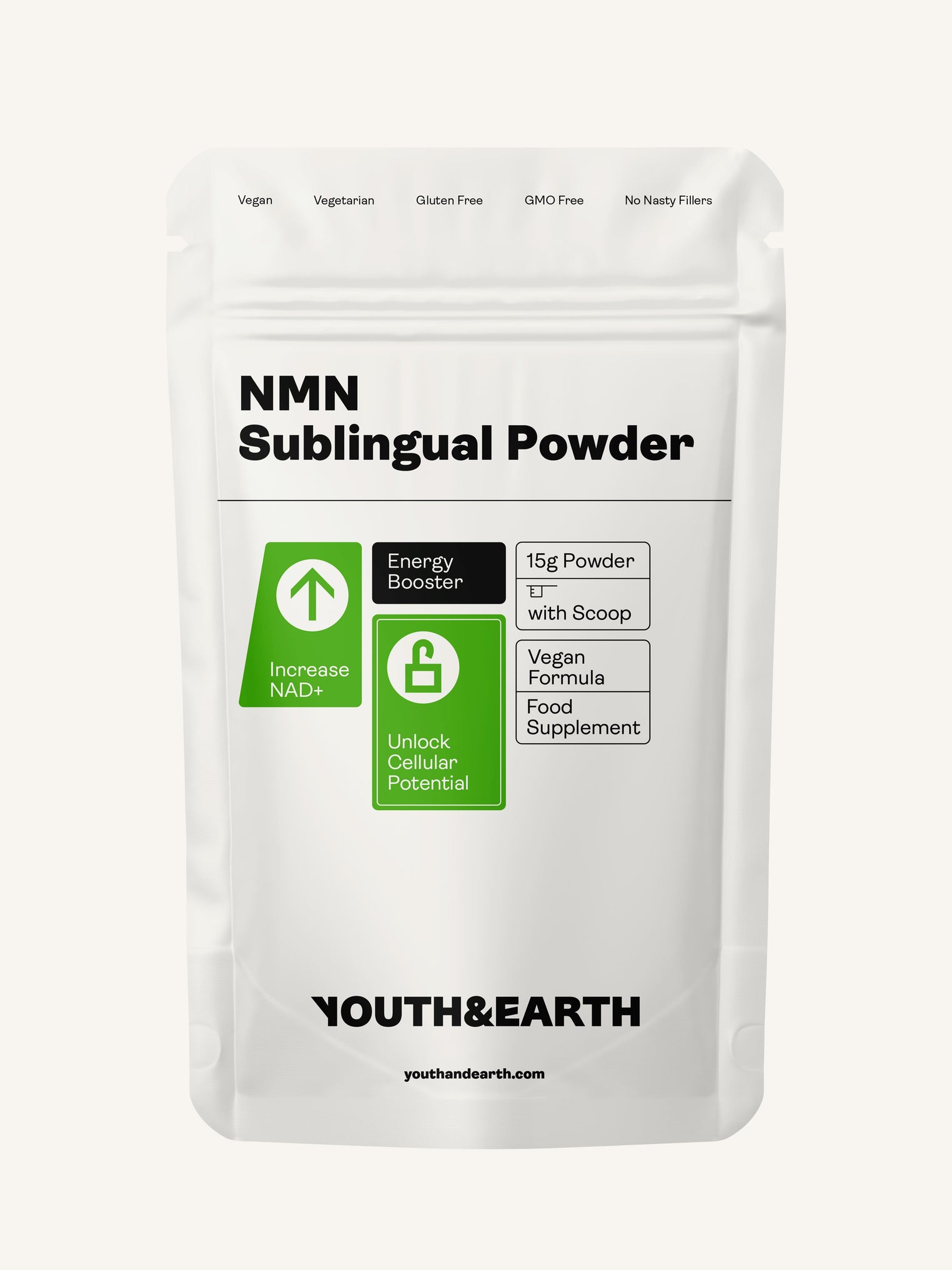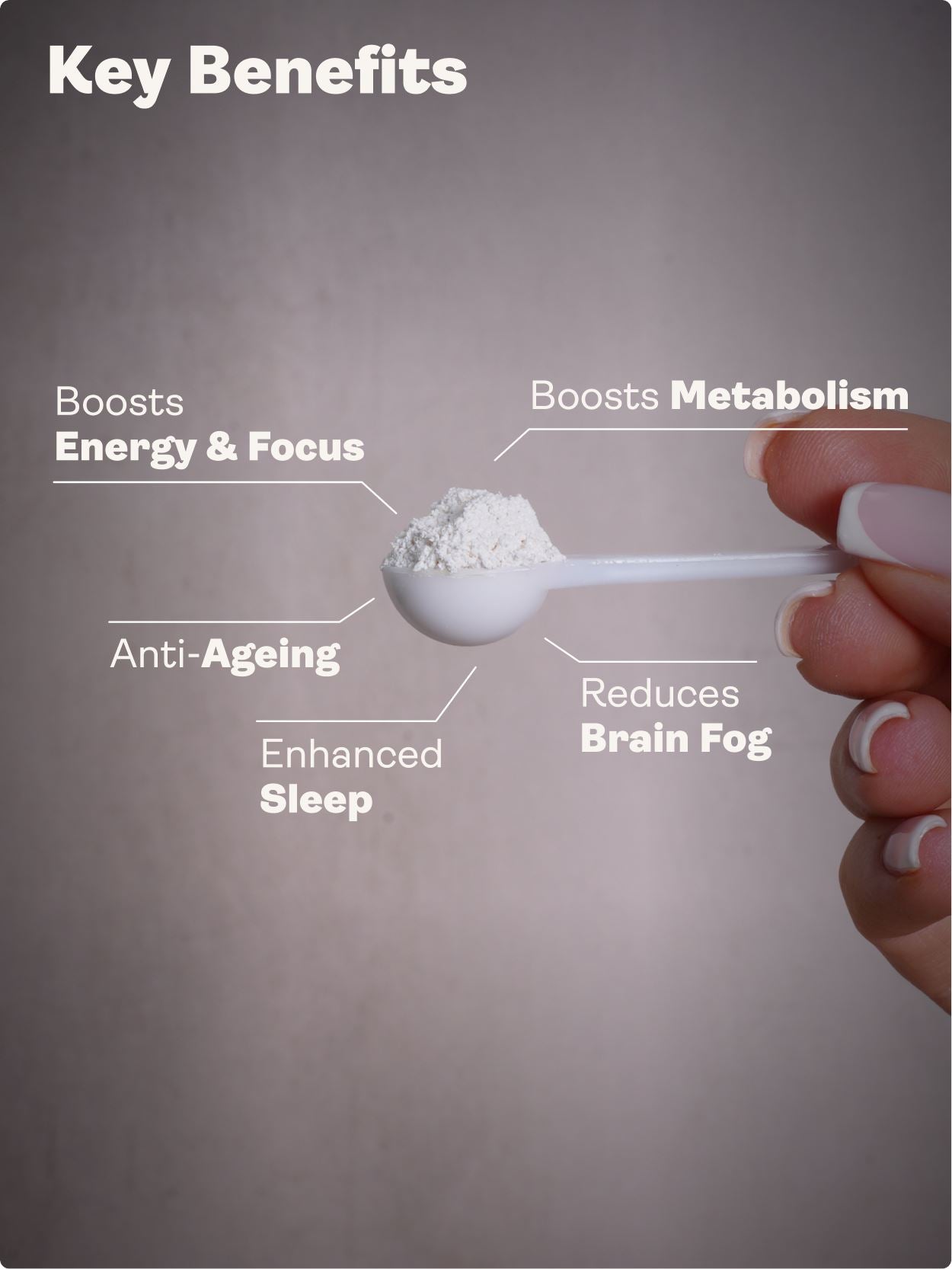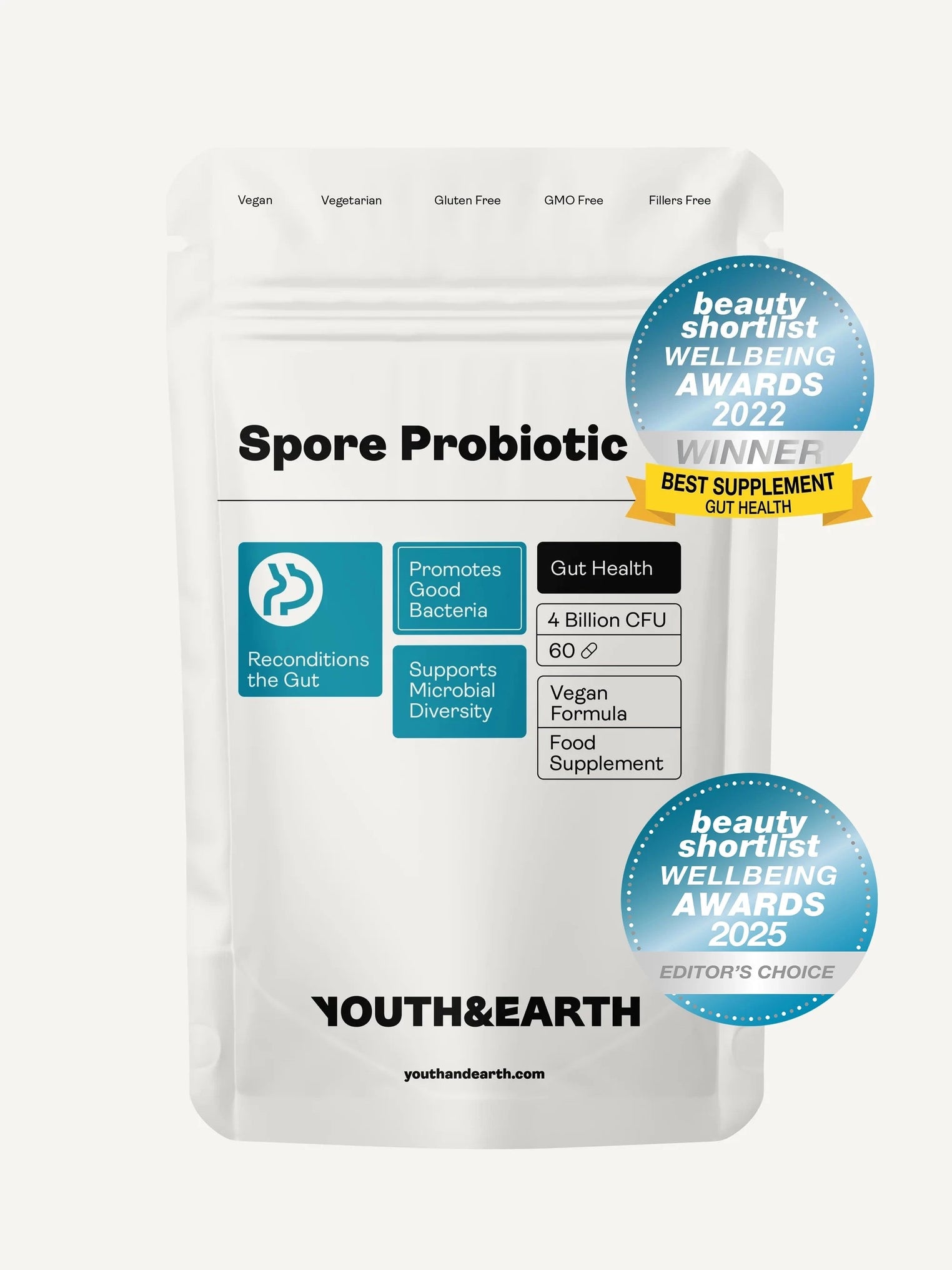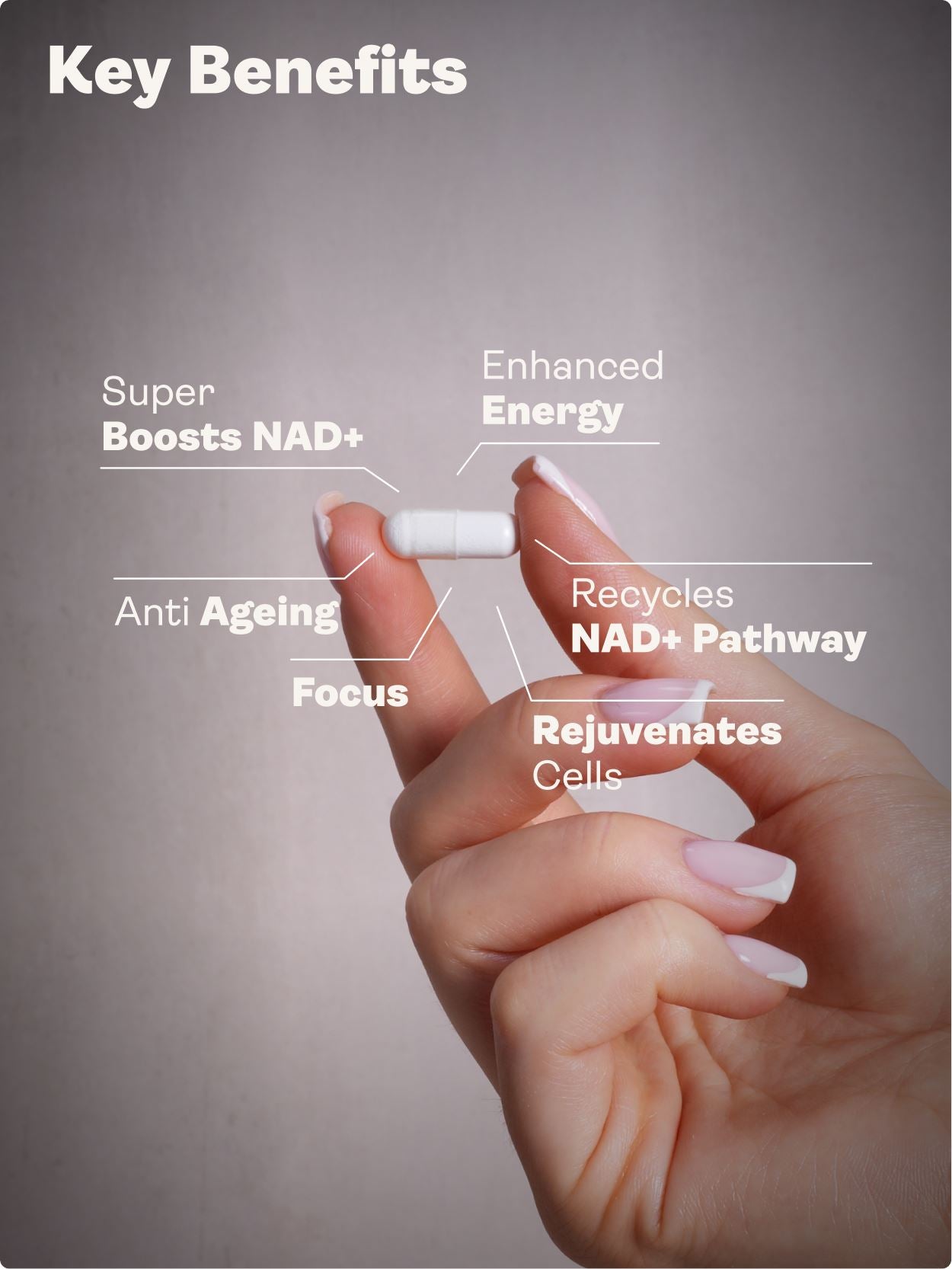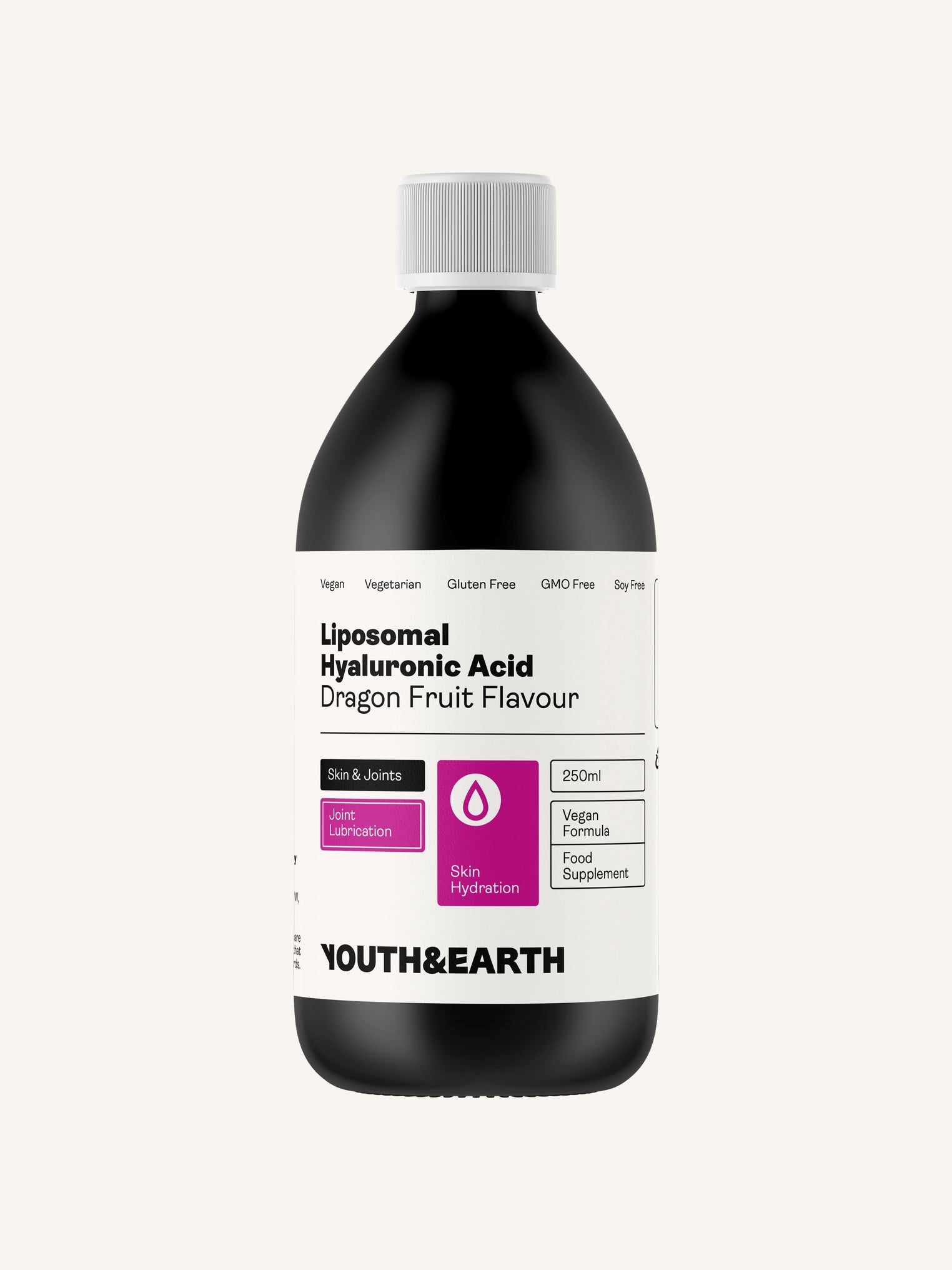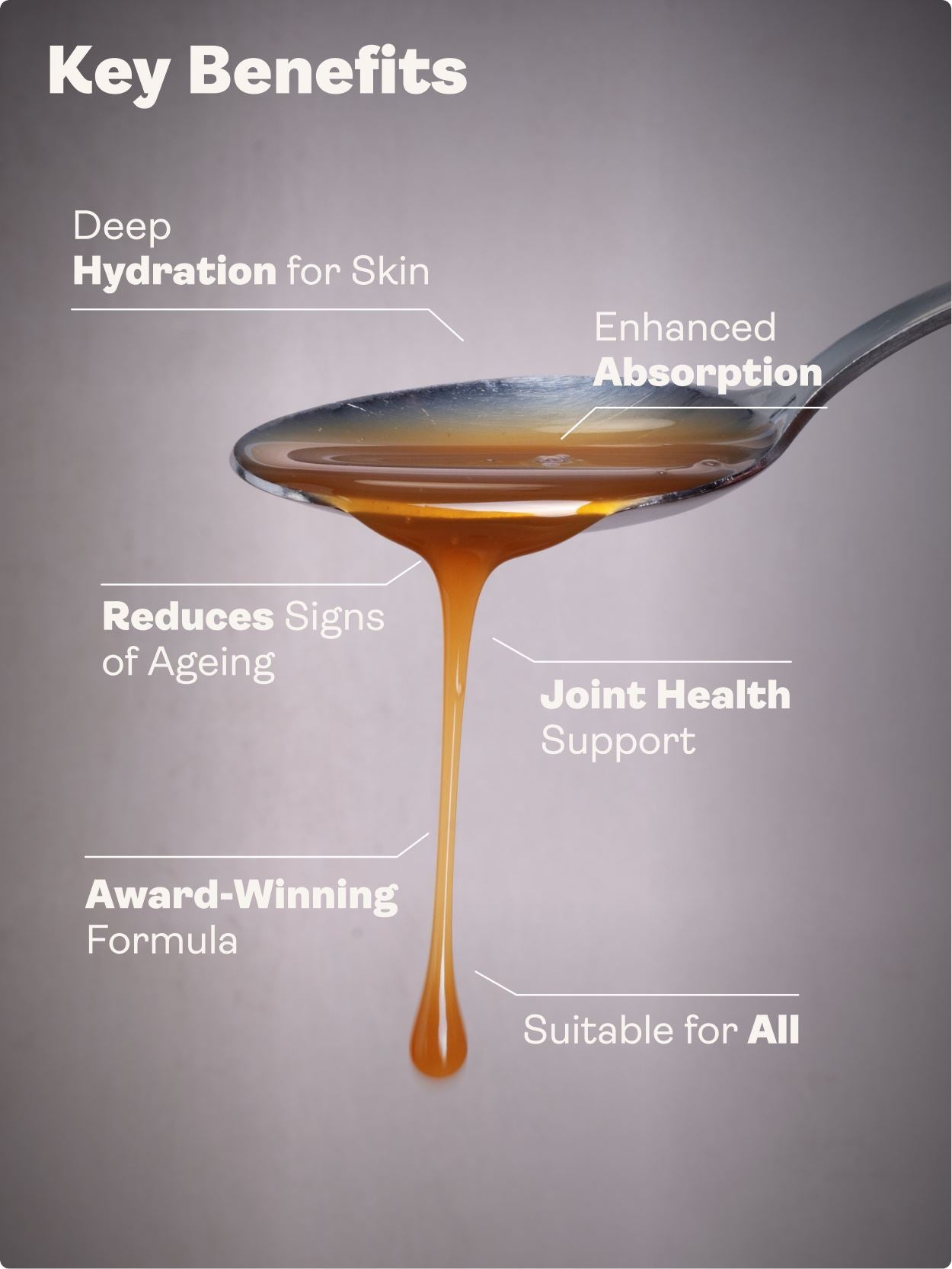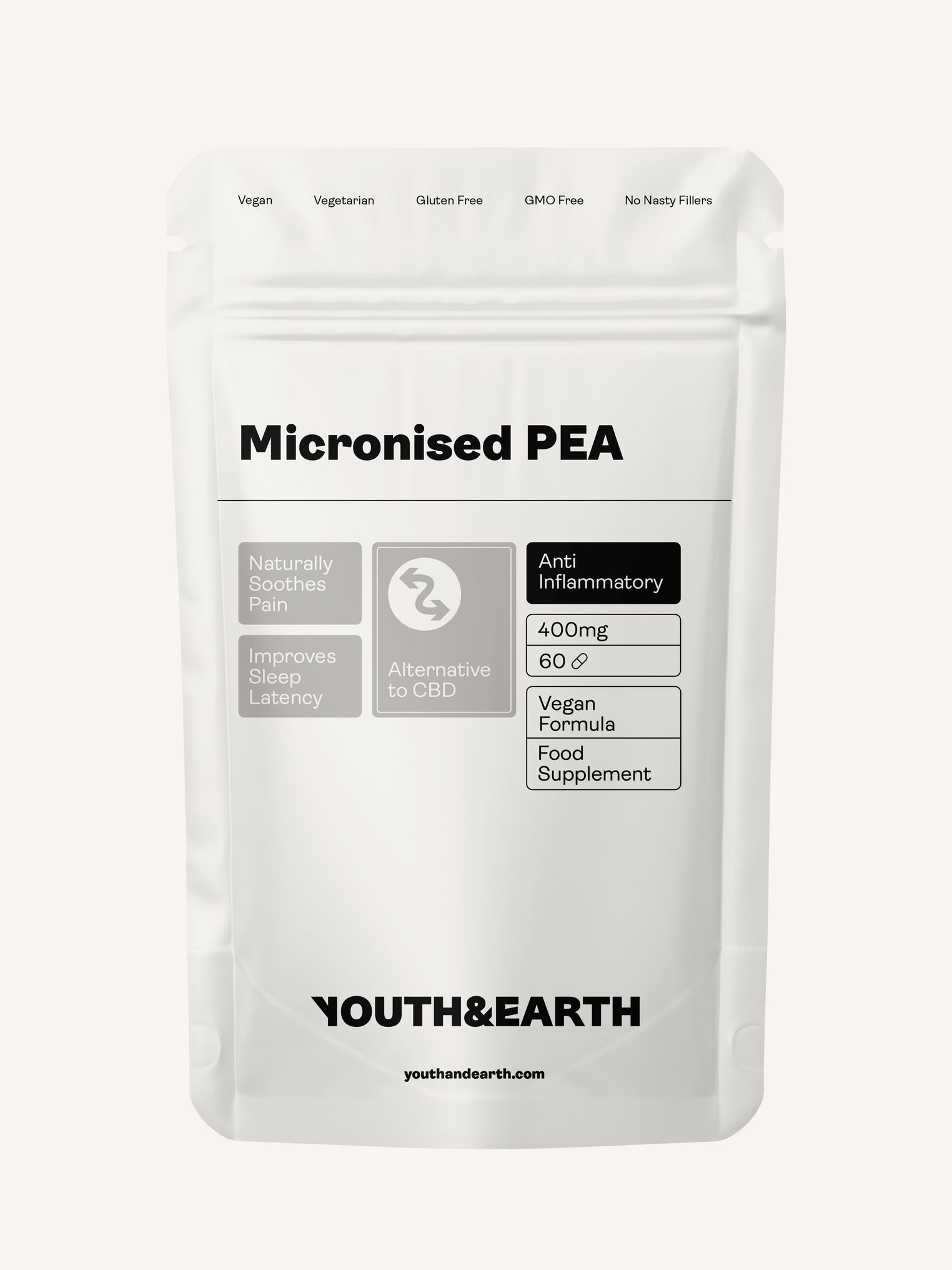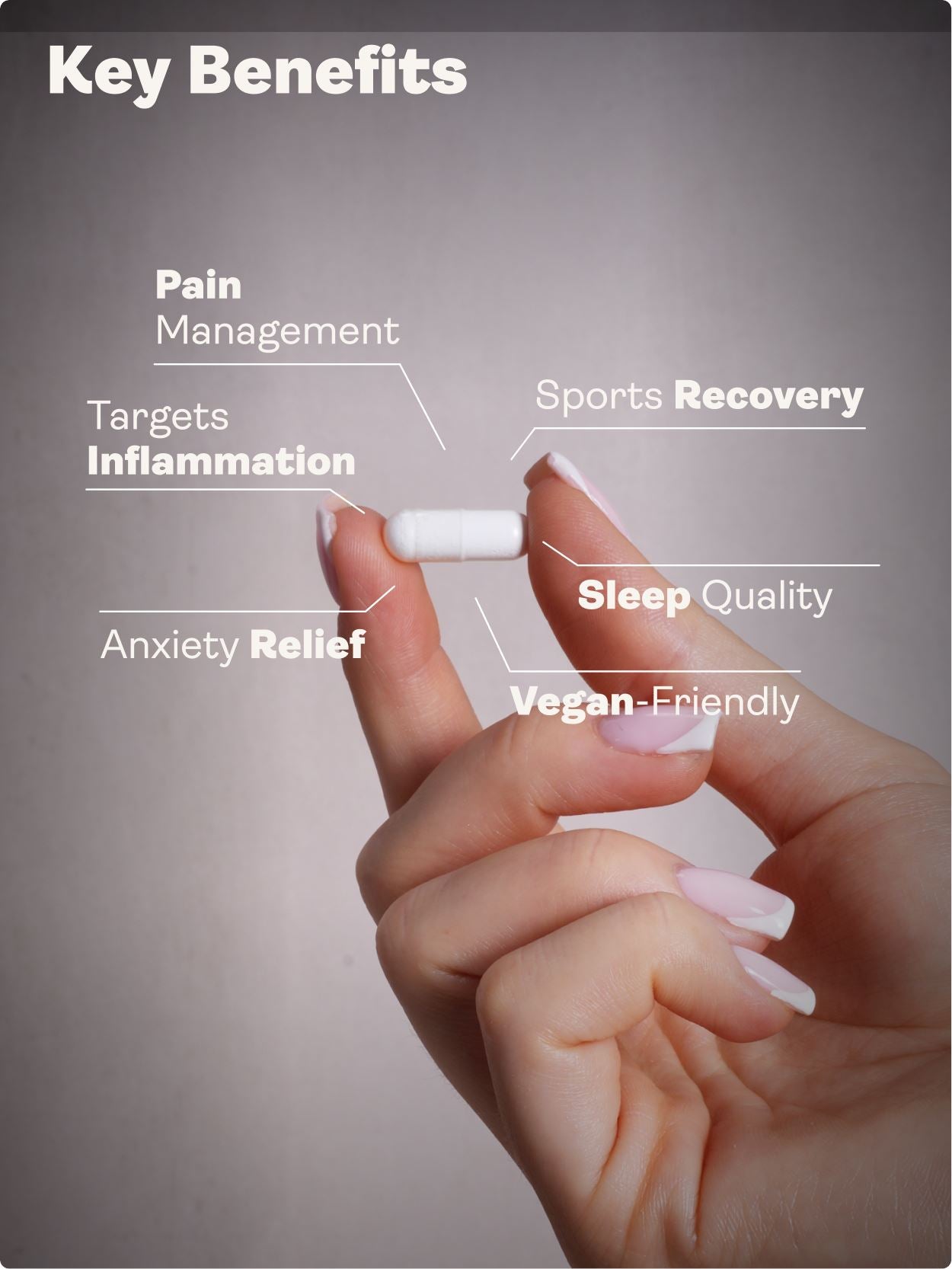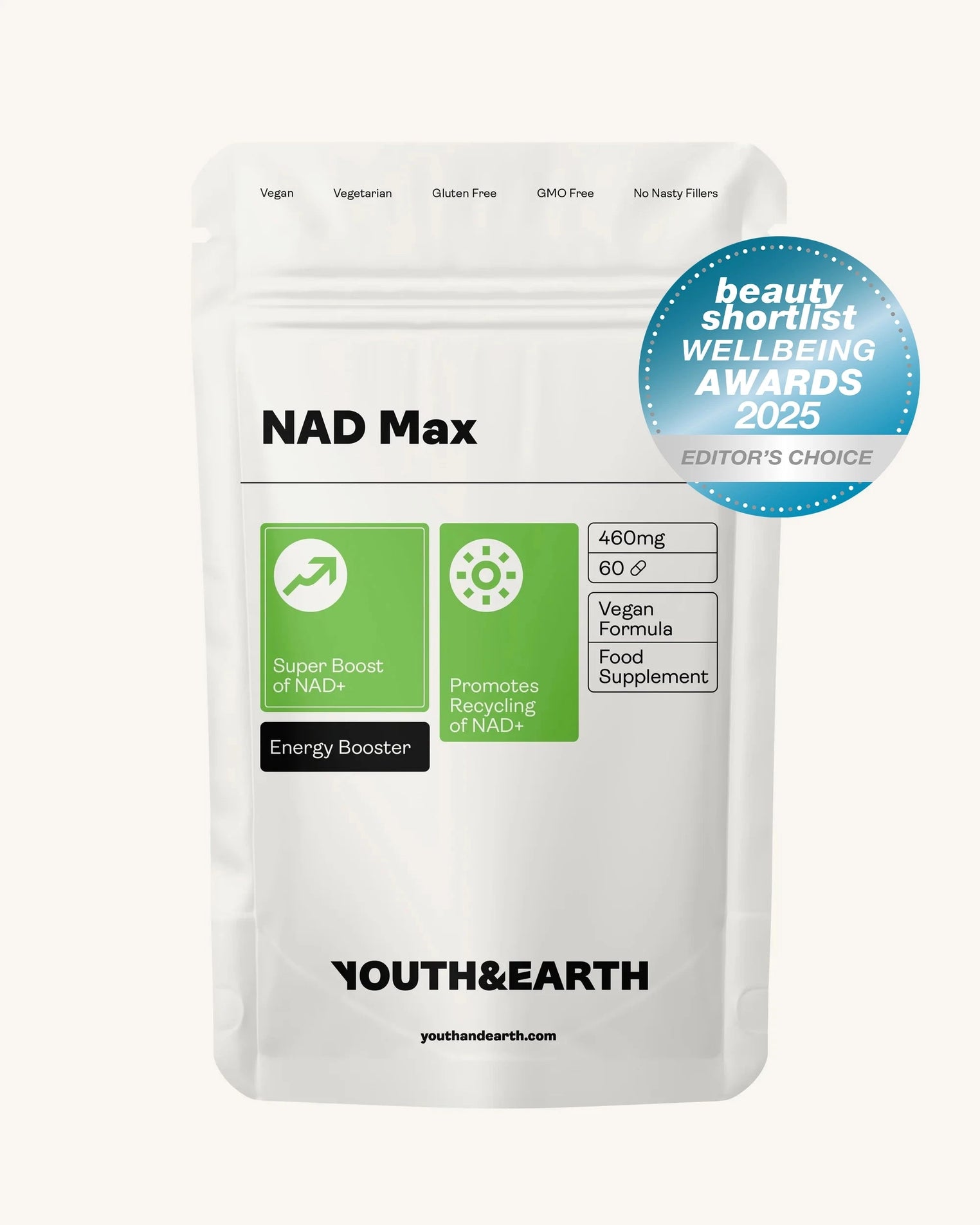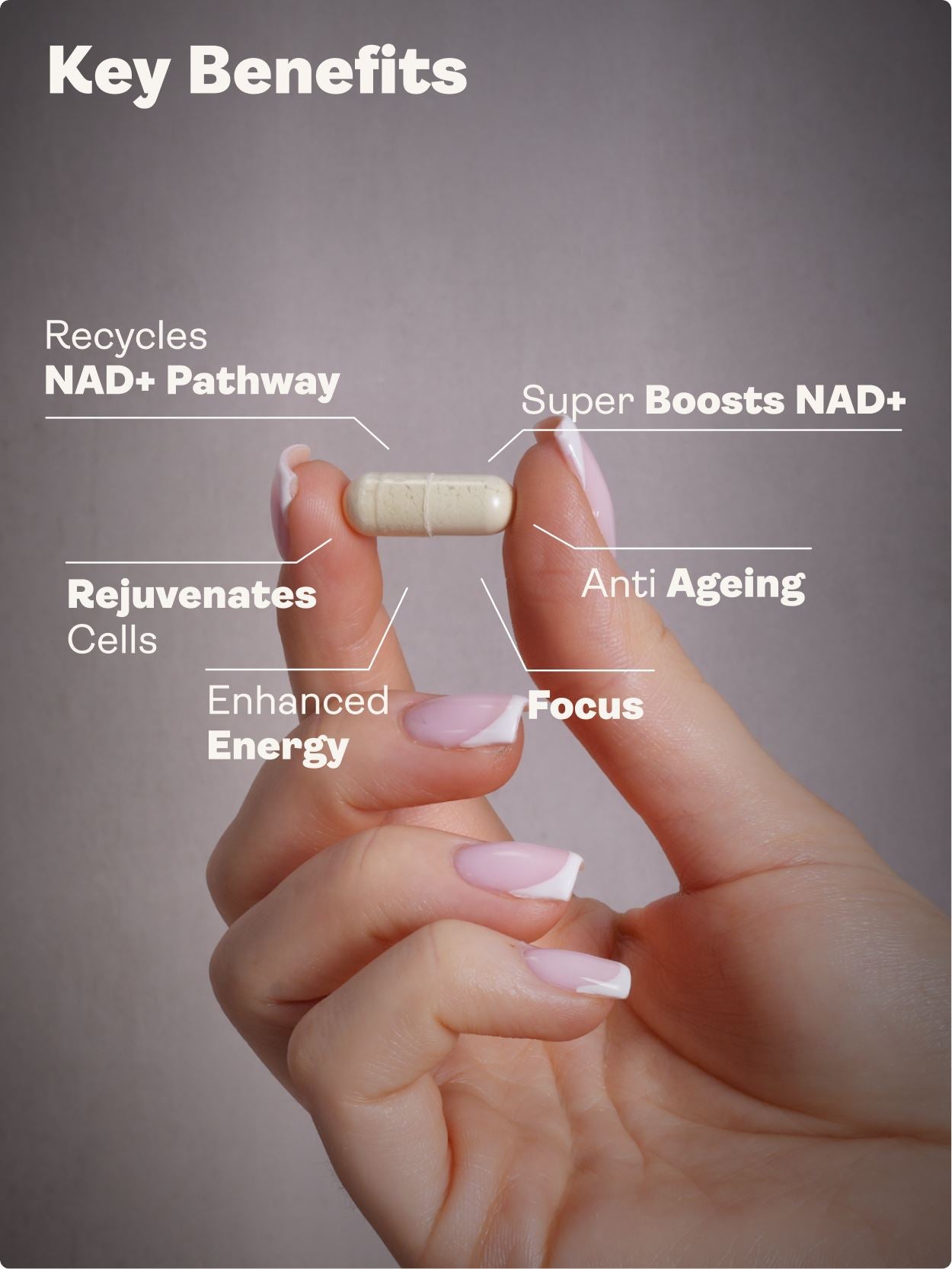Could a single antioxidant support energy, protect your cells, and influence key longevity pathways?
Alpha-lipoic acid (ALA) may be one of the most versatile compounds in your anti-ageing toolkit.
TL;DR
Alpha-lipoic acid (ALA) is a unique antioxidant that works in both water and fat, giving it access to all cells and tissues. It supports mitochondrial energy production, reduces oxidative stress, regulates blood sugar, and interacts with longevity pathways like AMPK and NF-kB. While found in foods like spinach and broccoli, levels decline with age — making supplementation, especially with high-bioavailability forms like liposomal R-ALA, a powerful biohacking strategy for energy, nerve health, skin vitality, and overall healthy ageing.
Science Snapshot
- Dual solubility: Works in both fat and water phases, protecting all cell types.
- Mitochondrial cofactor: Supports ATP production, similar to CoQ10.
- Longevity pathways: Activates or modulates AMPK; inhibits NF-kB to balance inflammation.
- Antioxidant recycling: Regenerates other antioxidants like vitamin C and glutathione.
- Metabolic support: Improves insulin sensitivity, lipid profiles, and energy metabolism.
What Is Alpha-Lipoic Acid?
Alpha-lipoic acid (also called thioctic acid) is a naturally occurring fatty acid produced in the mitochondria of cells. It’s both an energy metabolism cofactor and a potent antioxidant, able to neutralise free radicals in both aqueous and lipid environments.
Roles of ALA in the Body
- Energy production: Works in mitochondria to help convert nutrients into ATP.
- Pathway regulation: Modulates AMPK (energy sensing) and NF-kB (inflammation signalling).
- Antioxidant defence: Scavenges free radicals and regenerates other antioxidants.
- Detox support: Supports glutathione production for heavy metal and toxin elimination.
Key Health Benefits
Blood sugar regulation
ALA has been shown to improve insulin sensitivity and support glucose metabolism, making it valuable in managing type 2 diabetes and metabolic health.
Nerve health
Intravenous ALA is recognised in Germany for diabetic neuropathy, and it shows promise for other nerve-related conditions like carpal tunnel syndrome.
Skin vitality
Topical ALA can reduce fine lines, improve skin texture, and protect against UV-related oxidative stress.
Cognitive protection
ALA may slow cognitive decline in Alzheimer’s and improve outcomes when combined with omega-3 fatty acids.
Weight management
Human trials suggest modest but significant weight loss, reduced inflammation, and improved fat metabolism.
Food Sources of ALA
- Spinach
- Broccoli
- Tomatoes
- Brussels sprouts
- Green peas
- Yams
- Liver and organ meats
- Red meats
Dietary amounts are small; supplementation is often recommended for therapeutic benefits.
Conditions ALA May Help
- Type 2 diabetes and insulin resistance
- Diabetic neuropathy
- Skin ageing and UV damage
- Alzheimer’s and cognitive decline
- Carpal tunnel syndrome
- Olfactory loss
- Obesity and weight management
Safety & Dosage
ALA is generally well-tolerated, with mild side effects in rare cases (rash, nausea). Doses up to 2400 mg in adults have not been linked to serious adverse effects. Those who are pregnant, breastfeeding, or have diabetes should seek medical guidance before use.
Choosing the Best ALA Supplement
For maximum bioavailability, liposomal delivery is recommended. Youth & Earth offers a liposomal R-alpha-lipoic acid with vitamin C — the R form is more biologically active, with stronger antioxidant and brain-protective effects. Combining it with vitamin C offers synergistic immune and antioxidant benefits.
Conclusion & Checklist
Alpha-lipoic acid supports energy production, protects cells, and influences core longevity pathways. Supplementing with high-quality ALA, especially in liposomal R-ALA form, can be an effective biohacking tool for metabolic health, nerve function, skin vitality, and anti-ageing goals.
- Understand ALA’s dual role in energy and antioxidant defence.
- Include ALA-rich foods but consider supplementation for therapeutic levels.
- For biohacking and longevity, combine with other pathway activators like berberine and resveratrol.
- Opt for liposomal R-ALA for best absorption and potency.
- Consult a healthcare provider if you have diabetes or chronic conditions.
FAQ
Is alpha-lipoic acid safe long-term?
It appears safe for most adults, but long-term studies are limited. Consult your doctor for high doses or extended use.
What’s the difference between R-ALA and ALA?
R-ALA is the natural form found in the body and is more biologically active than synthetic mixed forms.
Can ALA help with weight loss?
Yes — studies show modest weight reduction, especially when combined with lifestyle changes.
Glossary
ALA (alpha-lipoic acid): A mitochondrial fatty acid that acts as a coenzyme and antioxidant.
AMPK: Energy-sensing enzyme regulating metabolism and longevity.
NF-kB: Protein complex controlling inflammation.
ATP: Cellular energy currency.
Medical Disclaimer
The content in this article is for informational purposes only and not a substitute for medical advice. Always consult a healthcare provider before starting any new supplement or health programme.






